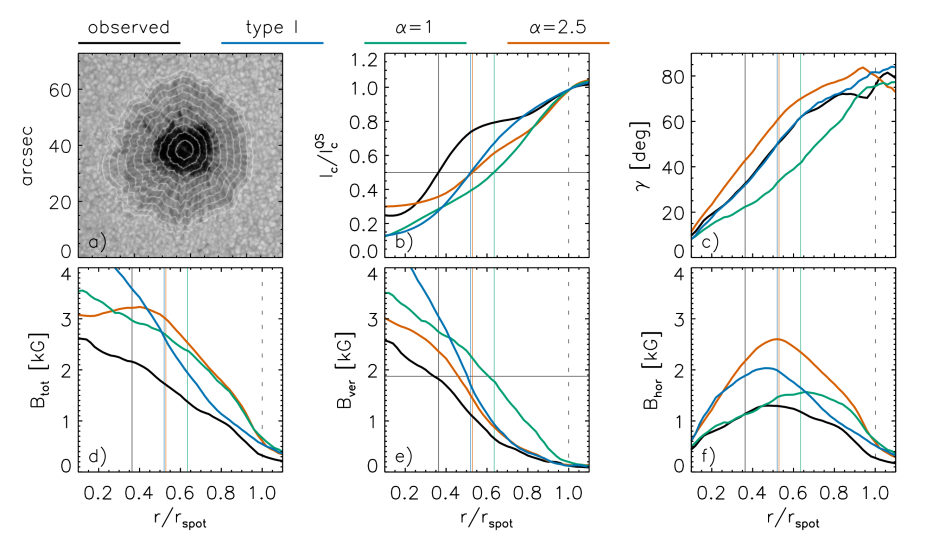Publication Name: A&A; First HAO Author's Name: M. Rempel
The analyses of sunspot observations revealed a fundamental magnetic property of the umbral boundary, the invariance of the vertical component of the magnetic field. We aim to analyse the magnetic properties of the umbra-penumbra boundary in simulated sunspots and thus assess their similarity to observed sunspots. Also, we aim to investigate the role of plasma $\beta$ and the ratio of kinetic to magnetic energy in simulated sunspots on the convective motions as these quantities cannot be reliably determined from observations. We use a set of non-grey simulation runs of sunspots with the MURaM code. The setups differ in terms of subsurface magnetic field structure as well as the magnetic field boundary imposed at the top of the simulation domain. These data are used to synthesise the Stokes profiles that are then degraded to the Hinode spectropolarimeter-like observations. Then, the data are treated like real Hinode observations of a sunspot and magnetic properties at the umbral boundaries are determined. Simulations with potential field extrapolation produce a realistic magnetic field configuration on their umbral boundaries.

Radial profiles of continuum intensity (b), magnetic field inclination (c), total magnetic field strength (d), vertical magnetic field strength (e), and horizontal magnetic field strength (f). The continuum intensity map of the observed sunspot with contours marking relative radial positions from 0.1 to 1 is shown in panel (a). The solid vertical lines mark the umbra-penumbra boundaries, the dashed vertical lines mark the penumbra-quiet Sun boundary. The horizontal lines in (b) and (e) mark the 50% quiet Sun intensity and 1876 G contour, respectively. Only sunspot simulations with a potential field top boundary condition (type 1 and alpha=1) have a vertical magnetic field strength values at the umbra-penumbra boundary that are similar to those observed.
Two simulations with potential field upper boundary, but different subsurface magnetic field structures, differ significantly in the extent of their penumbrae. Increasing the penumbra width by forcing more horizontal magnetic fields at the upper boundary results in magnetic properties that are not consistent with observations. This implies that the size of the penumbra is given by the subsurface structure of the magnetic field. Namely, the depth and inclination of the magnetopause shaped by the sunspot flux rope expansion with height. None of the sunspot simulations is consistent with observed properties of the magnetic field and direction of the Evershed flow at the same time. Strong outward directed Evershed flows are only found in setups with artificially enhanced horizontal component of the magnetic field at the top boundary that are not consistent with the observed magnetic field properties at the UP boundary. We want to stress out that the `photospheric' boundary of simulated sunspots is defined by a magnetic field strength of equipartition field value.